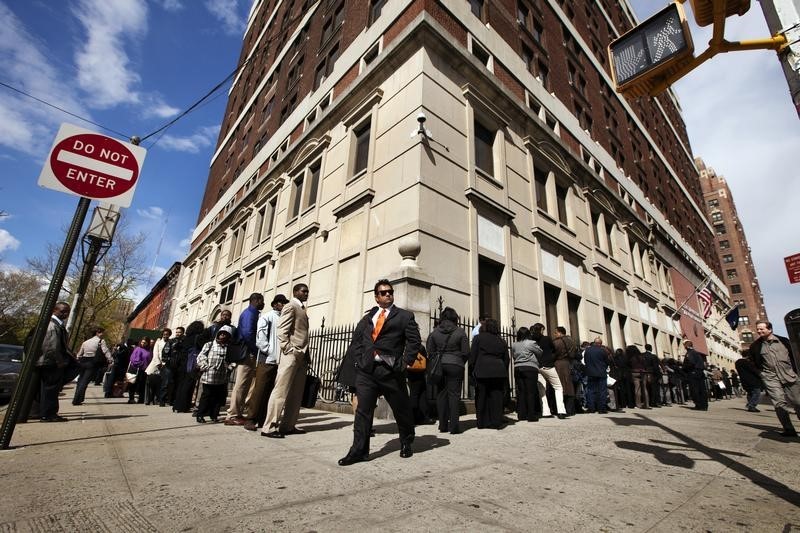Investing.com -- The U.S. economy unexpectedly created jobs at a faster pace in April against substantial downward revisions in the preceding months, as the country's labor market showed signs of resilience even as the Federal Reserve has signaled that it may push pause on a string of recent interest rate hikes.
According to data from the Labor Department's Bureau of Labor Statistics on Friday, nonfarm payrolls rose by 253,000 last month, well above economists' projections that the figure would come in at 180,000.
The numbers for the prior two months were heavily revised. The change in March saw the U.S. add 165,000 jobs instead of the original reading of 236,000. In February, the total was brought down to 248,000 from 326,000. The combined revisions are 149,000 lower than previously reported.
Meanwhile, the unemployment rate edged down to 3.4% from 3.5% in March, surprising expectations that it would accelerate to 3.6%.
The month-on-month rate of growth in average hourly earnings also moved up to 0.5%, rather than holding steady at 0.3% as originally predicted. It was the highest level since 2022.
"Despite all the economic slings and arrows, businesses continue to add strongly to their payrolls," said Mark Zandi, chief economist at Moody's Analytics, in a tweet. "Underlying monthly job growth is close to [225,000], still a bit too strong to fully quell inflation, but moving in the right direction."
Cooling strong labor demand and wage increases has been a key objective in the Fed's ongoing fight to defeat elevated inflation. The U.S. central bank has rolled out an aggressive campaign of rate hikes in order to achieve this goal.
Earlier this week, Fed chair Jerome Powell hinted that policymakers could be starting to ponder an end to the cycle, although that commentary was tempered by the central bank's reiteration that it would keep tightening further if inflation fails to moderate.
"[W]e need a bit higher unemployment to further rein in wage growth, which was on the hot side last month," Zandi tweeted. "This is key to getting inflation down enough to convince the Fed to stop raising rates."
The two-year U.S. Treasury yield, which closely tracks rate estimates, touched session highs following the publication of the jobs report.
